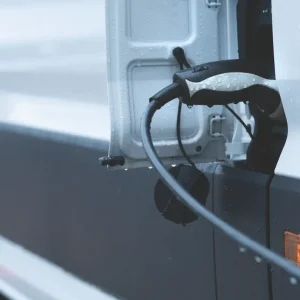Insurance – it’s a necessary evil when it comes to paying out to make sure you don’t lose out in the event of an accident. However, premiums can be reduced via varying approaches and, with an ever-growing number of providers in the market, there is even more potential to make big savings.
“The UK has a highly competitive van insurance industry, and consumers should always
shop around for the best deal,” advises Ben Howarth, policy adviser for motor and liability at the Association of british Insurers, who says that fleets may also benefit from using a specialist commercial insurer or an insurance broker to help find the most appropriate policy for your business.
“Some insurers may offer a lower premium if you increase your vehicle’s security or use telematics, which can help to demonstrate that you are safe and responsible behind the wheel,” he adds
It is imperative to choose the product that is right for you and your operation – and that could depend on whether you want single-vehicle insurance or fleet- wide coverage.
“If you’re looking to buy individual van insurance, things like driver training don’t really affect prices, but increasing security – for example, fitting an aftermarket tracking device
– can save money,” says Gerry Donnachie, head of underwriting at Axa business Insurance.
“Having your van sign-written or adapted with shelving or racking can also reduce your premium, as insurers tend to believe that these things demonstrate a more professional businessman, and someone who will be a more careful driver,” he adds. “It’s also helpful to keep the number of drivers down if possible – some of the best discounts are usually for one
or two named drivers. And it’s also important to regularly review your declared mileage and the value of your van – if these are too high then you’ll likely be paying too much.”
There are a number of trade-specific schemes available that can offer very competitive prices for those who qualify, says Donnachie. “You can find details of many of these online by doing a search and it’s always worth using a price-comparison site as these cover a wide range of the market very quickly.”
For fleet policies, Donnachie believes it is more about cost and frequency of claims. “those companies who have better claims histories will enjoy lower premiums. As with individual van insurance, opting for a higher excess or extending the excess to also include windscreen claims is likely to save you money, but should be done with an eye on what you as a customer can afford to pay yourself.
“This is still a market that is very much controlled via brokers,” adds the Axa man. “A good broker will be able to obtain quotes from a number of insurers and save you time as well.”
Risk assessment
One can approach insurance costs by looking closely at risk management, which is something Andy price, practice leader – EMEA, motor fleet, Zurich insurance, advocates.
“When you start to look at costs associated with collisions, they are higher than the costs of
the premiums themselves. but because they don’t appear on a balance sheet, a lot of people aren’t concerned about them,” he says. “because the insurance cost is a very tangible figure, people look at and understand it, but with uninsured losses – such as absenteeism, brand damage, penalty clauses – those really add up. they are called hidden costs for a reason.”
Price uses specific examples to demonstrate to fleets how these costs could impact their business. “Nestle´ worked out that for its global fleet costs, it would have to sell 235 million KitKats every year, to fund its insurance programme,” he reveals. “Likewise, I was working with a builder’s merchant, and every time it broke a wing mirror on a truck, it had to sell more than 200 bags of cement to cover the uninsured losses associated with that incident.
“It raises awareness and gets people thinking,” he maintains. to reduce premiums, Price would “try and encourage people to have fewer crashes – an easy thing to say, but more difficult to bring about”.
He explains: “When you look at how an underwriter calculates a premium, about 75% is based on attritional crashes that they are expecting the customer to have (based on collision history). that is where the base calculations would start, and a lot of the extra elements added to a premium are levies and admin costs that are based on the number of attritional claims. Anything fleets can do to reduce this number of claims is going to start to play out in the premiums they pay.”
In terms of reducing collisions, price says: “A lot of fleets would want to get down to driver level, whereas the first thing we advocate is getting the management systems aligned, and creating an environment where people can drive safely. If a driver is having too many rear-end collisions, it might be because the driver is going too fast, is too close, or distracted.
They may be exhibiting these behaviours because they are trying to achieve a business goal. maybe they have got unrealistic delivery schedules, or are forced to make hands-free telephone calls while on the move, meaning they are distracted.” Until the customer can do something to change the underlying pressures, price says, they won’t have much success with anything else they do from a risk management perspective.
His final piece of advice is for companies to think about a different programme structure – such as increasing their excess:
“I would encourage that because if a customer has a bigger excess, they will see it on the balance sheet, so there is a financial motivation to manage risk better. With this financial motivation, people are more likely to try and make a difference.





